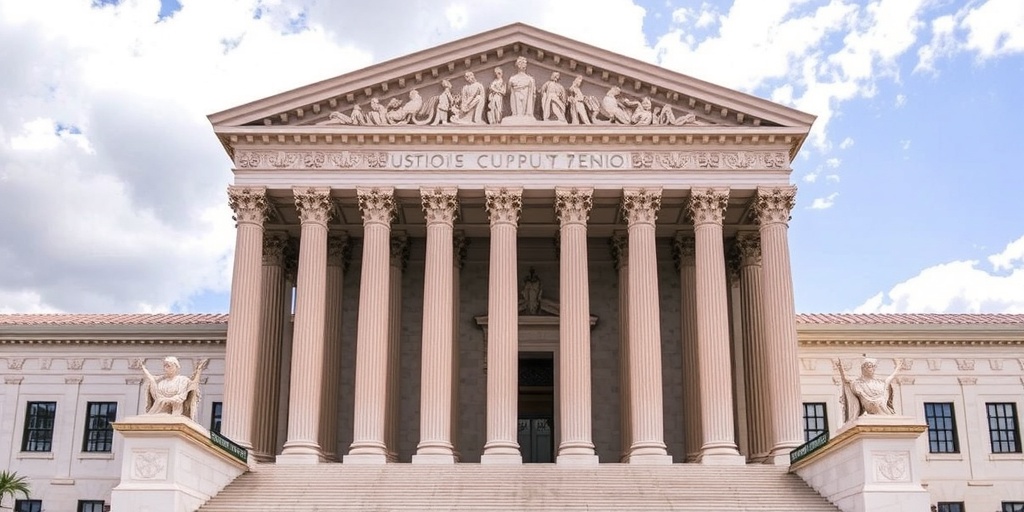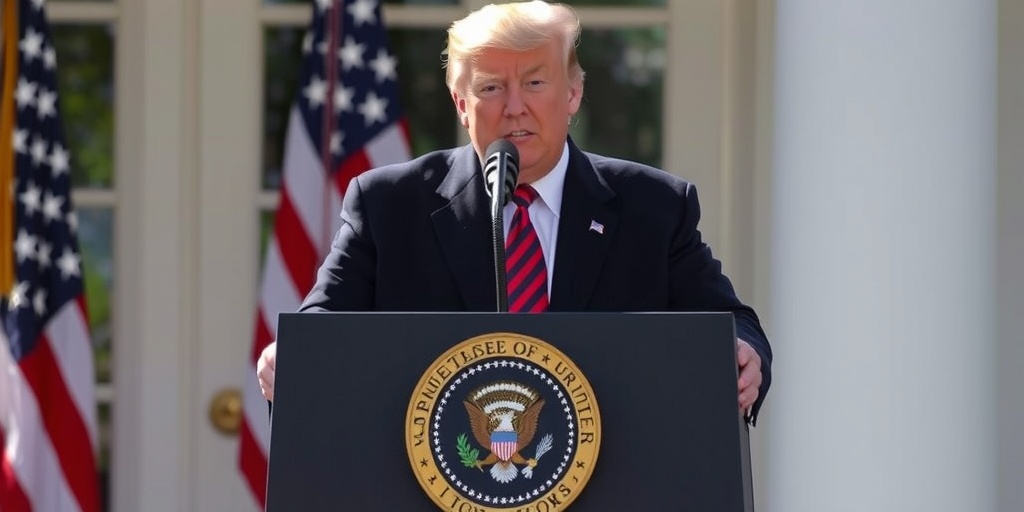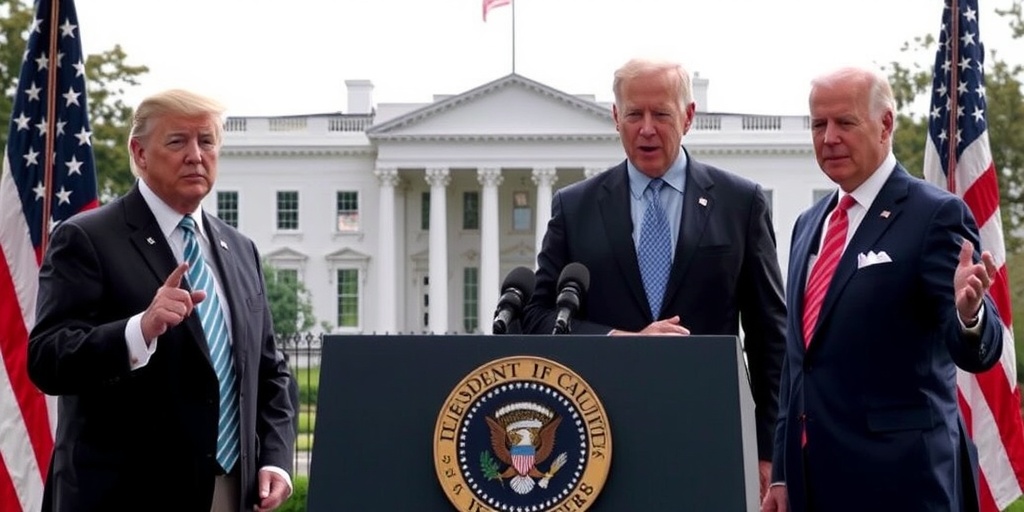Now Reading: Supreme Court Set to Favor Straight Woman in Discrimination Case
-
01
Supreme Court Set to Favor Straight Woman in Discrimination Case
Supreme Court Set to Favor Straight Woman in Discrimination Case

Supreme Court Weighs Employment Discrimination Case: A Look at a Straight Woman’s Claim Against Discrimination in the Workplace
Two years following the Supreme Court’s controversial decision to dismantle race-conscious admissions policies in higher education, the court has now turned its attention to a significant employment discrimination case involving Marlean A. Ames, a straight woman asserting that she was denied jobs due to her gender and sexual orientation. This case comes in the backdrop of the Trump administration’s rigorous measures aimed at eliminating diversity-promoting initiatives, adding layers of complexity to the current judicial landscape.
On Wednesday, the justices began hearing oral arguments pertaining to Ames’s lawsuit against the Ohio Department of Youth Services, where she alleges discriminatory treatment after applying for a promotion. Her supervisors cited a lack of vision and leadership skills as reasons for rejecting her application, ultimately awarding the position to a gay woman who had less experience and no college degree. Furthermore, after denying Ames the promotional opportunity, her supervisors demoted her from her existing position and replaced her with a gay man who had less seniority.
Ames’s case hinges on Title VII of the Civil Rights Act of 1964, which prohibits employment discrimination based on various characteristics, including sex. In a pivotal 2020 ruling, the Supreme Court determined that discrimination based on sexual orientation constitutes a form of sex discrimination, thereby reinforcing the applicability of Title VII to cases of sexual orientation. However, challenges arose when lower courts insisted that majority-group plaintiffs, like Ames, must present additional proof of discrimination. This stipulation has sparked debate about fairness and consistency within the legal framework.
The U.S. Court of Appeals for the Sixth Circuit, which ruled against Ames, suggested she failed to meet the necessary “background circumstances” that could indicate discrimination. They argued that she did not provide sufficient evidence to prove that the employment decisions were made by individuals motivated by her sexual orientation or that anyone was even aware of it. This ruling has drawn attention to whether plaintiffs from majority groups should be subjected to a different standard than those from minority backgrounds.
During the recent Supreme Court proceedings, Justice Neil M. Gorsuch referred to a “radical agreement” among both the justices and the lawyers involved in the case, as they all seemingly recognized that the Sixth Circuit had incorrectly imposed a heightened burden of proof on Ames. Justice Brett Kavanaugh expressed optimism that the court would deliver a concise ruling indicating that discrimination based on sexual orientation—regardless of whether a person is gay or straight—is impermissible.
The implications of the ruling could be significant; while some conservative advocacy groups are eager to use this case to challenge workplace diversity initiatives, the Biden administration has also expressed support for Ames’s claims. The administration’s legal brief argued against the appeals court’s stance, emphasizing the need for equitable treatment across all protected classes.
The courtroom exchanges revealed varying perspectives on the case. Justice Elena Kagan pressed on whether the appeals court’s reasoning was flawed. Ohio’s solicitor general, T. Elliot Gaiser, distanced himself from the appellate court’s decision, affirming that it is unjust to hold individuals of majority groups—like white or straight individuals—to a stricter standard in discrimination cases. He pointed out that it is inappropriate to require additional proof based on a plaintiff’s demographic characteristics and emphasized the necessity for uniform application of civil rights protections.
Throughout the arguments, justices expressed varying degrees of concern about the potential consequences of a ruling favoring Ames; some worried it could trigger a deluge of litigation regarding employment discrimination claims. However, other voices, including Ames’s lawyer, Xiao Wang, countered that several federal appeals courts do not impose such stringent standards on majority-group plaintiffs and have not experienced a corresponding spike in lawsuits.
In contrast, conservative groups viewed the case as emblematic of a broader issue, advocating that discrimination against straight individuals and white employees is prevalent due to an imbalance in diversity programs. Debates surrounding the historical intent of Title VII and its focus on protecting historically disadvantaged groups also surfaced, highlighting the complexities inherent in contemporary discussions of workplace equity.
As the Supreme Court deliberates on the legitimacy of requiring added proof from majority-group plaintiffs like Ames, the decision could significantly influence the interpretation of civil rights laws related to employment discrimination, potentially reshaping the landscape of workplace equality in America. The justices’ ruling promises to shed light on the nuances of discrimination claims and could have far-reaching implications for various demographic groups traversing the avenues of employment law.
Stay Informed With the Latest & Most Important News
Previous Post
Next Post
-
 01New technology breakthrough has everyone talking right now
01New technology breakthrough has everyone talking right now -
 02Unbelievable life hack everyone needs to try today
02Unbelievable life hack everyone needs to try today -
 03Fascinating discovery found buried deep beneath the ocean
03Fascinating discovery found buried deep beneath the ocean -
 04Man invents genius device that solves everyday problems
04Man invents genius device that solves everyday problems -
 05Shocking discovery that changes what we know forever
05Shocking discovery that changes what we know forever -
 06Internet goes wild over celebrity’s unexpected fashion choice
06Internet goes wild over celebrity’s unexpected fashion choice -
 07Rare animal sighting stuns scientists and wildlife lovers
07Rare animal sighting stuns scientists and wildlife lovers





















